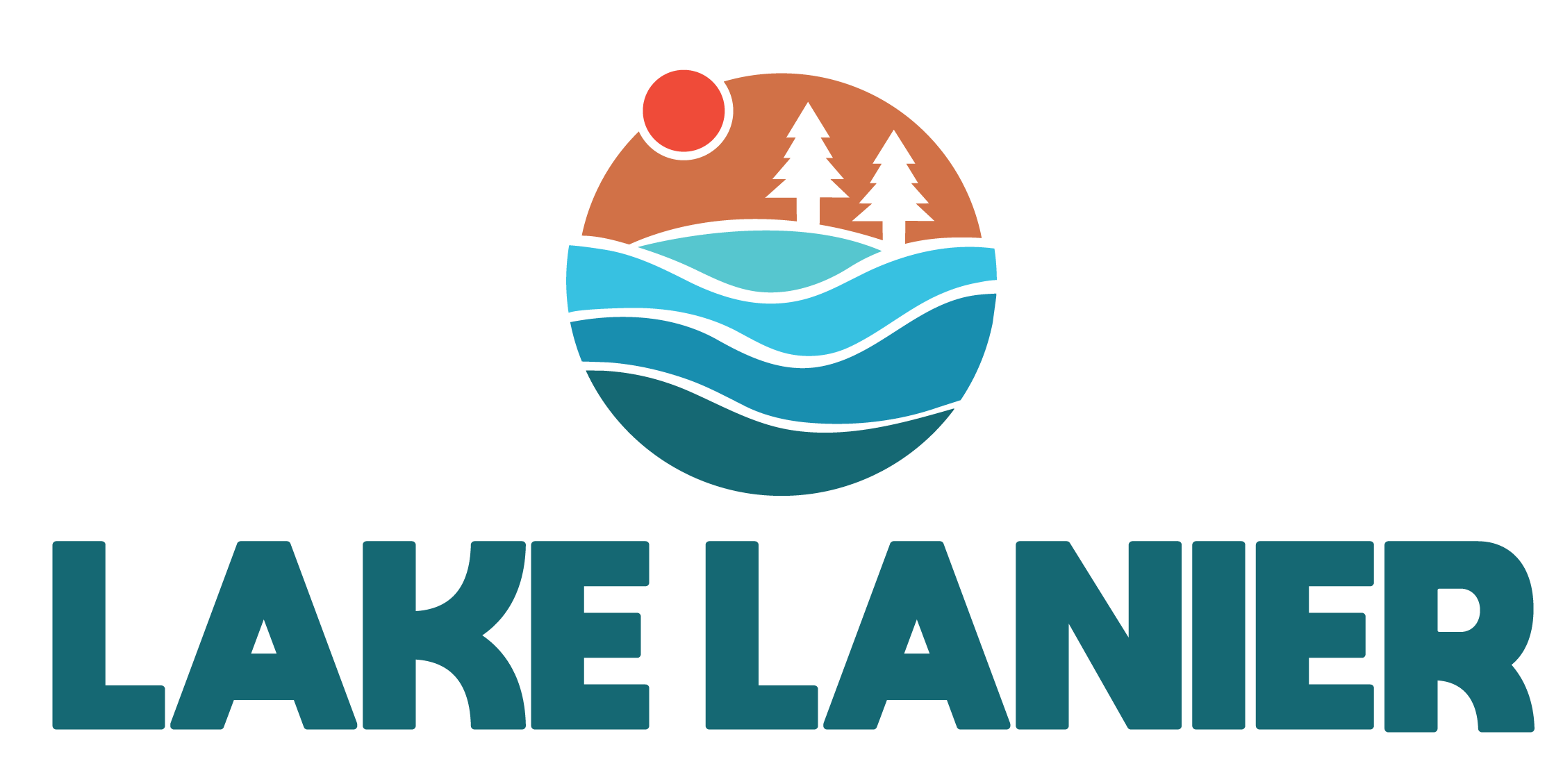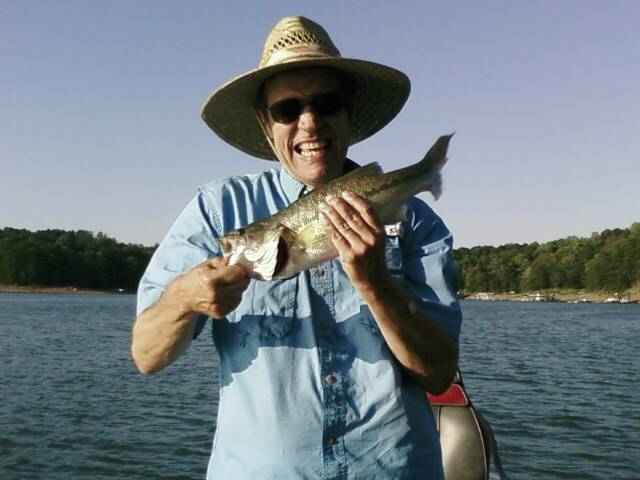
After record-breaking snow and ice, on Monday, March 16, 2015, some areas experienced record high temperatures. Just in time for colder weather and rain later in the week. We need two things: new ways to keep from succumbing to cabin fever and tips for catching striped bass on Lake Lanier.
Fisherpeople, and other individuals incapable of telling the truth, are reporting lots of action while fishing for stripers on Lake Lanier and elsewhere. It might be true, but it’s also possible they haven’t caught a fish in so long that they’re hallucinating.
Striped bass are abundant in many reservoirs across the state thanks to the stocking efforts of the Fisheries Management Section of the Georgia Department of Natural Resources’ Wildlife Resources Division.
Take the Georgia Department of Natural Resources’ Wildlife Resources Division, for example. They’re saying that “This time of year, it is common to catch five to 15-pounders, with the occasional landing of a 30-pounder or greater.”
Let me ask you a question. When was the last time it was common for you to land fish like that?
Right. Never. But that was then, this is now. NOW we have tips for catching striped bass on Lake Lanier and elsewhere around the Great State of Georgia!
Stripers prefer water temperatures less than 75 degrees and tend to concentrate over river channels and around submerged islands where threadfin shad and blueback herring are abundant.
Wildlife Resources Division biologists recommend medium to heavy 6 to 7-foot rods equipped with 12 to 18-pound test line. Some common striper lures are 3/8-ounce white bucktail jigs, soft plastic jerk baits and large minnow bait. Anglers with boats should cast to the shoreline or try trolling these artificial lures.
For more consistent results, live bait is recommended – 4 to 6-inch minnows or shad and blueback herring where legal (available at many local bait and tackle shops). Biologists recommend fishing live bait shallow, less than 10 feet, with a large bobber and no weight attached (free-lining), or fishing vertically (down-lining) with a 1-ounce sinker weight at greater depths of 10-30 feet. A size 2-4 hook is recommended for fishing these larger live baits and landing big stripers.
Best Places for Catching Striped Bass
- Lake Lanier: Right now, anglers should concentrate on the upper half of the reservoir and creek arms scattered around the entire lake. The points in Flat and Balus Creeks, Thompson and Wahoo Creeks as well as main lake points in the Chattahoochee River from Laurel Park to Clarks Bridge are seasonal favorites. Anglers should target stained (muddy) water on the north end of the lake which offer slightly warmer water temperatures that trigger striped bass feeding activity on shad and blueback herring. If water temperatures are below 50 degrees Fahrenheit, stripers go after smaller baitfish so anglers should switch to lighter line (8-pound line), smaller hooks and smaller bait when down-lining and free-lining.
- Clarks Hill Lake: Clarks Hill is annually stocked and has an abundant baitfish population, including threadfin shad, gizzard shad and blueback herring. Target the Little River arm or major points in the lower third of the lake.
- Lake Oconee: Target major creek arms, such as Lick, Sugar and Richland creeks, and then the deeper water near Wallace Dam.
- Lake Richard B Russell: Anglers should target large creek arms, such as Beaverdam Creek, the upper reaches of the Savannah River and the deeper water around the dam.
- Bartlett’s Ferry Lake: Striped bass have been annually stocked in this lake since 1992 to support the Gulf-strain striped bass recovery in the Apalachicola River System. Anglers should target the dam during winter, and during periods of power generation at West Point Lake and the Crow Hop/Riverview Dam area. Favorite baits include spoons, bucktail jigs and popping corks with trailing jigs.
- West Point Lake: Fishing with live shad is the most effective way of catching line sides on this lake. Jigs and spoons also work well. Concentrate efforts around the dam and deep channels during the cool months.
- Lake Juliette: Many anglers concentrate efforts near the pump discharge located just above the dam. Successful methods include trolling creek channels during the cooler months, and drifting or fishing on the bottom with live or cut shad.
- Chattahoochee and Flint rivers (Early, Dougherty and Worth counties): Anglers should try the Chattahoochee River just below Columbia Dam in Early County and on the Flint River below Lake Worth near Albany and Lake Blackshear where fish tend to be more active during hydroelectric operations from Warwick Dam.
- Coosa River: Spawning-run stripers will pour into the river over the next few months on their annual migration from Lake Weiss. Live, cut or artificial baits can entice 5-30 pound stripers from the river’s murky waters. The Lock and Dam Park and downtown Rome areas of the river are typical hot spots.
You’ll need a current fishing license to fish in Georgia’s public waters. Where can you get a license? Buy it online or find a list of retail license vendors at
Click Here for Tips on Catching Striped Bass
Click Here to Buy a Fishing License Online


